 Libri di Andrew Wallace-Hadrill su Unilibro.it
)
Libri di Andrew Wallace-Hadrill su Unilibro.it
)
|
|
1918 |
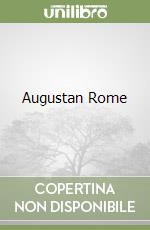 Title :
Augustan Rome
Title :
Augustan RomeAuthor: Wallace-Hadrill Andrew Publisher: Bloomsbury USA Academic € 17,90
|
|
|
2012 |
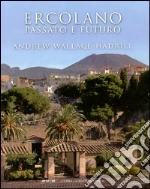 Title :
Ercolano. Passato e futuro. Ediz. illustrata
Title :
Ercolano. Passato e futuro. Ediz. illustrataAuthor: Wallace-Hadrill Andrew Publisher: artem Nel 79 d.c. il Vesuvio seppellisce Pompei e Ercolano sotto una coltre di cenere e lapilli. Andrew Wallace-Hadrill ricostruisce e decodifica i nessi essenziali, l'identitą, la trama di relazioni economiche, sociali, il rilievo straordinario, originale, della civiltą ercolanense: popolazione e provenienze etniche, spazi pubblici e privati, scambi tra cittą vesuviane e con l'universo romano... ripercorre con rigore evidenze documentarie, problematiche di scavo, di conservazione, di restauro e fruizione. Un'indagine frutto anche dell'impegno decennale del Packard Humanities Institute, nel quadro organico dell'Herculaneum Conservation Project. € 40,00
|
|
|
2008 |
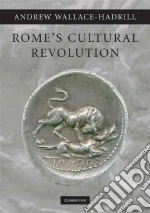 Title :
Rome's Cultural Revolution
Title :
Rome's Cultural RevolutionAuthor: Andrew Wallace-Hadrill Publisher: CAMBRIDGE UNIVERSITY PRESS The period of Rome's imperial expansion, the late Republic and early Empire, saw transformations of its society, culture and identity. Drawing equally on archaeological and literary evidence, this book offers an original and provocative interpretation of these changes. Moving from recent debates about colonialism and cultural identity, both in the Roman world and more broadly, and challenging the traditional picture of 'Romanization' and 'Hellenization', it offers instead a model of overlapping cultural identities in dialogue with one another. It attributes a central role to cultural change in the process of redefinition of Roman identity, represented politically by the crisis of the Republican system and the establishment of the new Augustan order. Whether or not it is right to see these changes as 'revolutionary', they involve a profound transformation of Roman life and identity, one that lies at the heart of understanding the nature of the Roman Empire. € 50,60
|
|
|
1996 |
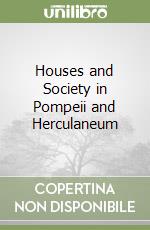 Title :
Houses and Society in Pompeii and Herculaneum
Title :
Houses and Society in Pompeii and HerculaneumAuthor: Wallace-Hadrill Andrew Publisher: Princeton Univ Pr Few sources reveal the life of the ancient Romans as vividly as do the houses preserved by the eruption of Vesuvius. Wealthy Romans lavished resources on shaping their surroundings to impress their crowds of visitors. The fashions they set were taken up and imitated by ordinary citizens. In this illustrated book, Andrew Wallace-Hadrill explores the rich potential of the houses of Pompeii and Herculaneum to offer new insights into Roman social life. Exposing misconceptions derived from contemporary culture, he shows the close interconnection of spheres we take as discrete: public and private, family and outsiders, work and leisure. Combining archaeological evidence with Roman texts and comparative material from other cultures, Wallace-Hadrill raises a range of new questions. How did the organization of space and the use of decoration help to structure social encounters between owner and visitor, man and woman, master and slave? What sort of 'households' did the inhabitants of the Roman house form? How did the world of work relate to that of entertainment and leisure? How widely did the luxuries of the rich spread among the houses of craftsmen and shopkeepers? Through analysis of the remains of over two hundred houses, Wallace-Hadrill reveals the remarkably dynamic social environment of early imperial Italy, and the vital part that houses came to play in defining what it meant 'to live as a Roman.' € 39,30
|
|
|
1995 |
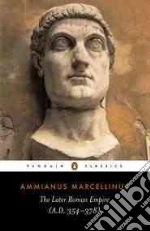 Title :
The Later Roman Empire
Title :
The Later Roman EmpireAuthor: Marcellinus Ammianus, Hamilton Walter (TRN), Wallace-Hadrill Andrew (INT) Publisher: Penguin Classics A fourth century army officer recounts the history of Rome during the reigns of Constantius, Julian, Jovian, Valentinian and Valens € 17,00
|